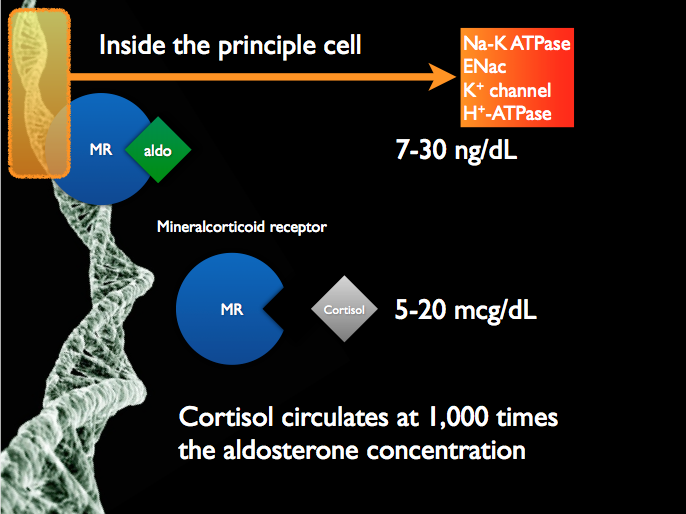I gave this grand rounds at St Johns and Providence Hospital last week (two grand rounds, same subject, same week, that's lecturing like a boss).
Here is a link to see the presentation with me narrating.
Same presentation but higher quality.
The original Keynote file is available here for remixing and editing.
A PDF of the presentation is available here.
Notes on the presentation
Much of the information on sulfanilamide comes from this article by the FDA.The picture comes from an ad on Etsy. I didn't get permission to use the photo, but I did buy the bottle, so that should be cool.
Harold Watkins committed suicide after the sulfonilamide disaster, though the owner of the Messengill Company never showed any regrets: Dr. Samual Evans Massengill, the firm's owner, said: "My chemists and I deeply regret the fatal results, but there was no error in the manufacture of the product. We have been supplying a legitimate professional demand and not once could have foreseen the unlooked-for results. I do not feel that there was any responsibility on our part."
Diethylene glycol, though it contains two molecules of ethylene glycol there is no evidence that it behaves like ethylene glycol in a poisonong and no evidence that fomepizole would be protective. Contemporary experience with diethylene glycol comes from the Haiti Contamination disaster and a PDF from JAMA.
There are various reports for how much was shipped and how much was confiscated, I took one set of data and ran with it. If I'm wrong, shoot me.
The Kelsey information is almost entirely from Wikipedia.
@kidney_boy One (minor) thing - McGill University is in Montreal, not Toronto. Can get folks upset here in Canada. :) (McGill grad here)
— Michelle Gibson (@MCG_MedEd) March 4, 2014
Getting reliable data on the size of the herbal supplement business was nearly impossible, I found sources that used anywhere from 5 billion to 100 billion. Most sources were around 26 billion so that is what I used. I imagine it depends a lot on what you includein dietary supplements and herbal medication. Of note, GNC alone does 2.6 billion dollars in revenue.
I like this slide, but it doesn't really fit into the lecture. I bet it gets cut in a future presentation.
The tag line that people take the drugs for years, what they may take changes but they will take something for years, comes almost verbatem from Kupin's lecture.
I really like the chart styles I used in this lecture. One of the problems with pie graphs is trying to associate a color to a trend. what part of the pie is attached to what is happening. By making one color with maximum contrast and the other with no contrast (transparent), it becomes much clearer. If I were to change anything I would get rid of the title of the slide and increase the typeface over the pies. Kupin's slide with the same data for comparison.
The silicate stone story is a little weak and could be cut.
Love this slide. Kupin's idea to leverage physician familiarity with Grapefruit interactions with how St. John Wort interacts. He is really clever.
The Metabolife story is so good it should be made into a movie. And the only reason there is an anvil animation is so you can drop the bars over some guy. Love this slide.
The Seville Orange and synephrine works great. The Blue Cohosh data is a little light and the fact that there aren't a million weight loss agents using it makes me suspect that it is not a very powerful alpha agonist. May need to research this herb more thoroughly.
I need to include the incredible aspect that Patrick Arnold was the guy who brought DMAA back from the dead. Patrick Arnold was the chemist behind BALCO and inventor of The Clear.
Wife helped me with this slide, the first version had patient temperatures and ambient temperatures on a single thermometer.
The Cheerios story is cute, and illustrative but it could be sacrificed.
One of the funniest parts of Kupin's talk is when he goes off on the crazy ridiculous packaging of herbal medications (American products waving the Dutch flag, etc.). I couldn't pull it off and added this single slide. I may talk a bit more about the packaging requirements of DSHEA.
Weight loss supplements, go home, you're drunk.
Phenolphthalein. Really?
The Glycyrrhiza glabra joke? It's Kupin's. The guy is really funny.
The 11beta-hydroxysteroid dehydrogenase story comes from my metabolic alkalosis, potassium and monogenic hypertension lecture.
It's principal cell not principle cell. Thanks Matt.
Love this twist to the Aruvedic medicine study. I find it so funny, it is the kind of thing that usually doesn't make it into the methods. #OverlyHonestMethods
Kupin spent a lot of time in his lecture talking about this. I blew through it pretty quickly. I may make time for this in a future version.
Love the way I told the Aristolochic Acid story. And this story board where I select the different countries turned out just like I hoped it would.
This slide didn't work as well as I would like.
The next version should add some of the data I started to put together on vitamins, especially the SELECT trial and the USPTF statement saying that vitamins have no role in the prevention of cancer of cardiac disease.


























